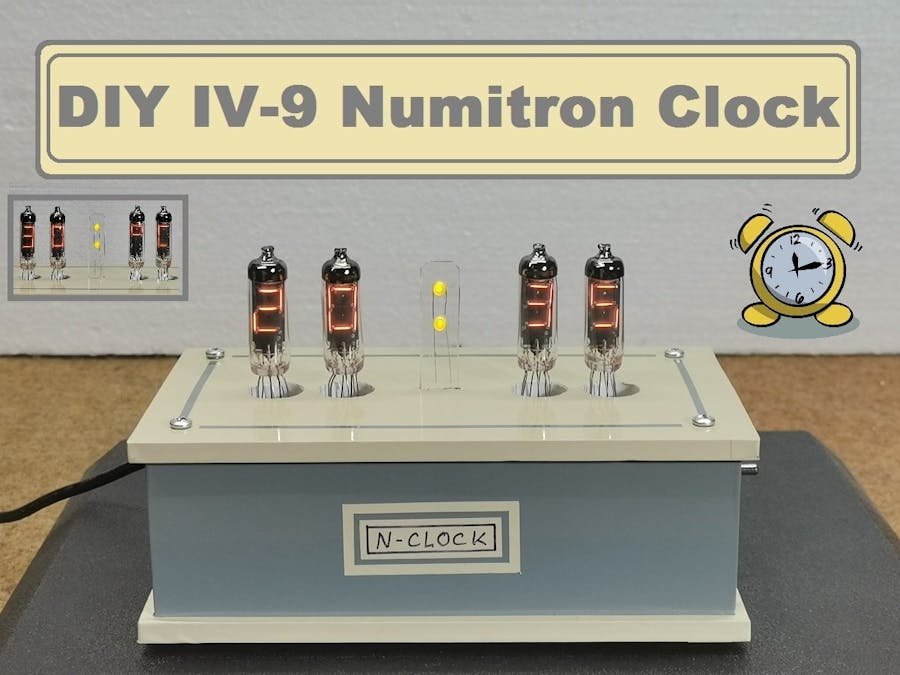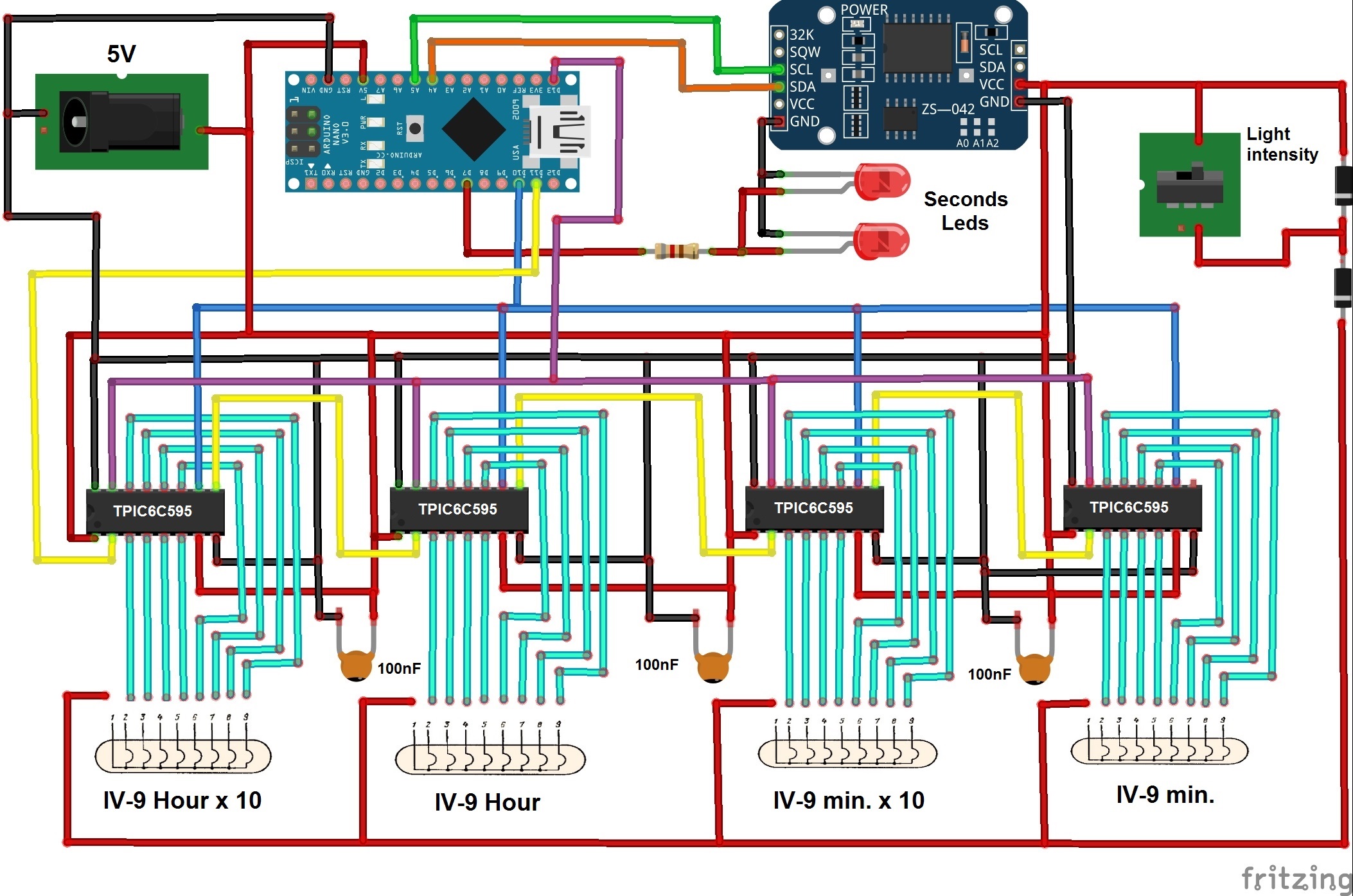This time I will show you how to make a nice Retro style Numitron tubes clock. In addition to the correct time, the device briefly displays the Date, Year, and Current Temperature every 30 seconds.
I got the idea to make this watch from the given Github page: https://github.com/theremotheman/simple_numitron_clock_with_4_shift_registers_and_rtc3231.
I first made the project according to the instructions on the site and found that it contained many flaws.
Here is what the first prototype with 74HC595 looked like
For 74HC595 IC The total maximum current according to the datasheet is 70 milliamperes, which in this case is several times exceeded (about 160 milliamperes for digit 8), so that after a while the IC overheats and does not work properly. Another lack is that there are too many delays in the loop of code so the time is read only once in 60 seconds. In the picture you can see the finished clock made primarily according to the instructions on the page above. In the beginning, it works completely normally, but after a while, random segments are activated and IC-s, numitrons, or the microcontroller can burn very easily. In the first case, the problem was solved by using TPIC6C595 IC instead of 74HC595, which is provided for larger currents. Also should be taken care of that these two integrated circuits are not pin compatible.
----------------------------------------------------------------------------------
https://www.pcbgogo.com/promo/from_MirkoPavleskiMK
-----------------------------------------------------------------------------------
And the new code was created Using millis() Instead of delay() function so now the real-time clock is read constantly. I also added a switch that changes the light intensity of the numitrons, and thus the lifespan. As you can see, the device is relatively simple to build and I think this is the simplest way to make a tube clock. Numitrons are inexpensive, easy to obtain, and do not use an additional high voltage power supply.
Only a few components are needed to make this clock:
- Four Numitron tubes IV9
- Four Integrated circuits TPIC6C595
- Arduino microcontroller
- DS3231 Realtime clock module
- Two LEDs for seconds
- Switch
- and four decoupling capacitors
The real-time module also contains a thermometer, so for a more accurate display of the temperature, it is located outside the box, protected by a mesh. First, it is desirable to synchronize real-time clock with the PC clock, and we do that with the help of the DS1307RTC library. Then we upload the code and with that the device is ready. It remains to modify the code so that we can set the time with the help of buttons and it will be in the next period as a project update.
Finally, the clock is mounted in a suitable box and is a beautiful decoration in every showcase.


















_1x_bGT19vVAby.png?auto=compress%2Cformat&w=40&h=40&fit=fillmax&bg=fff&dpr=2)


Comments